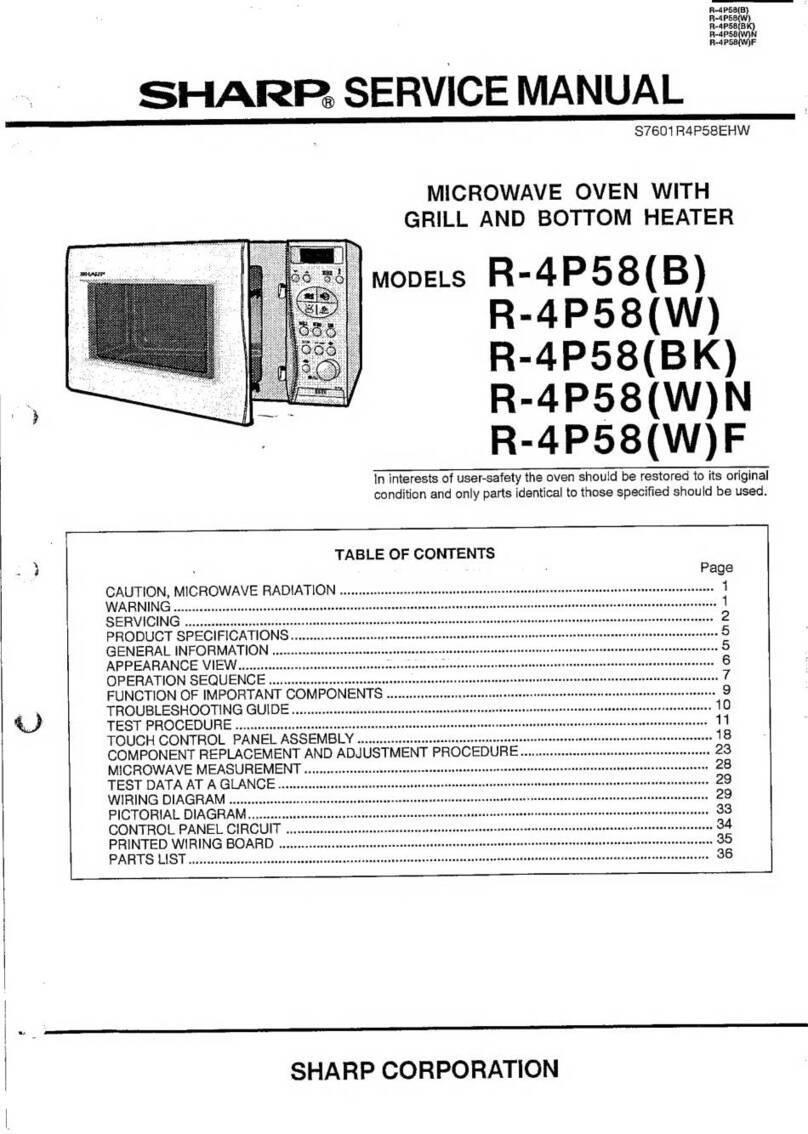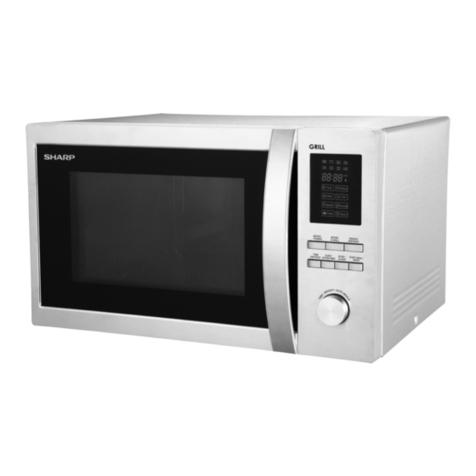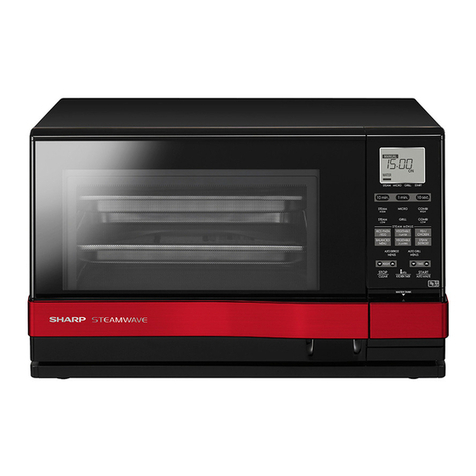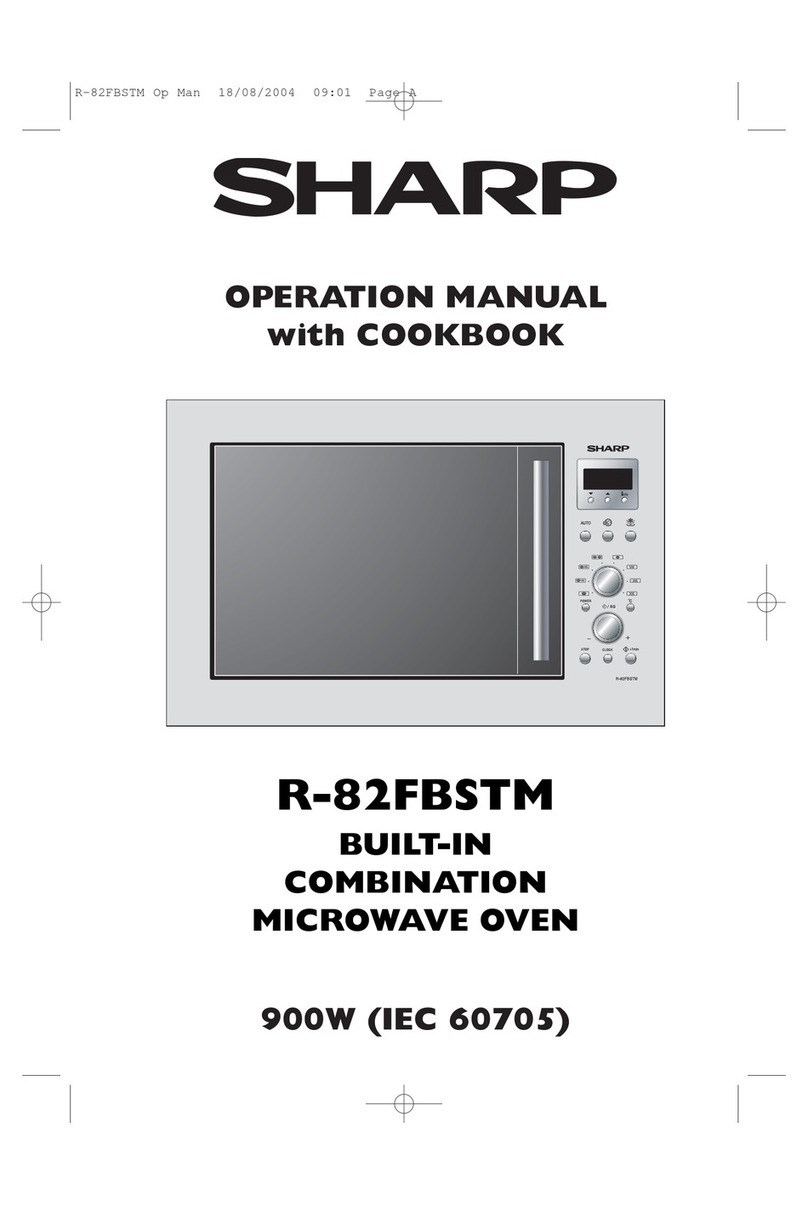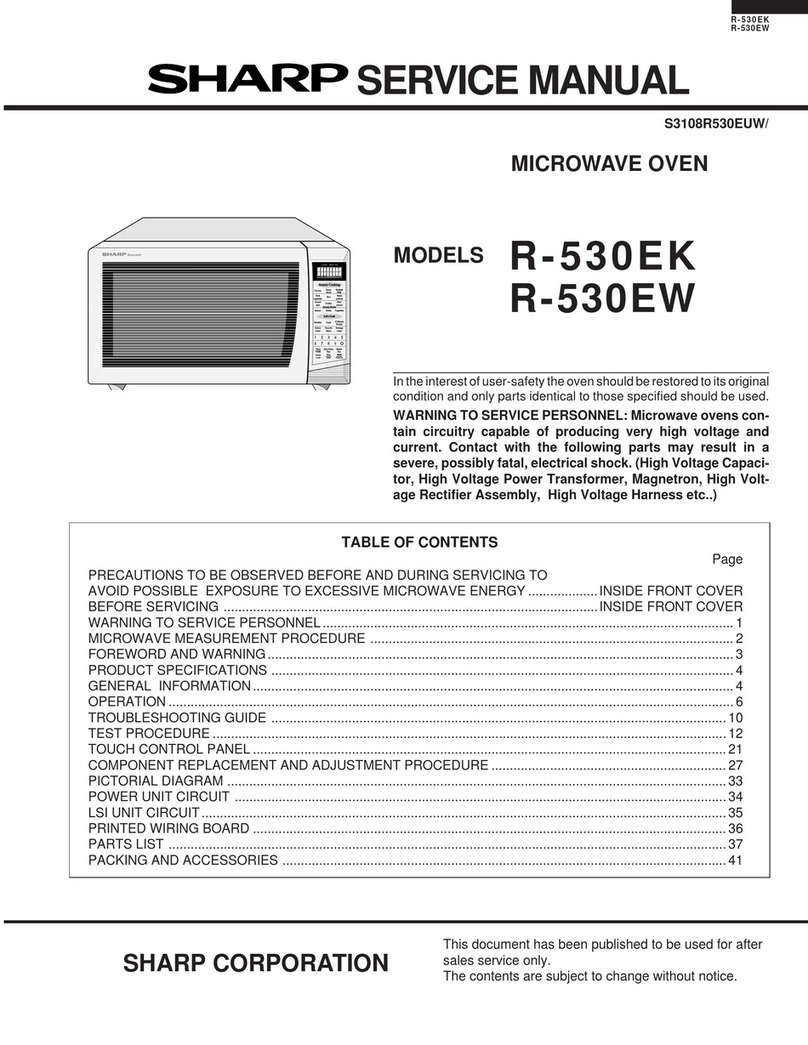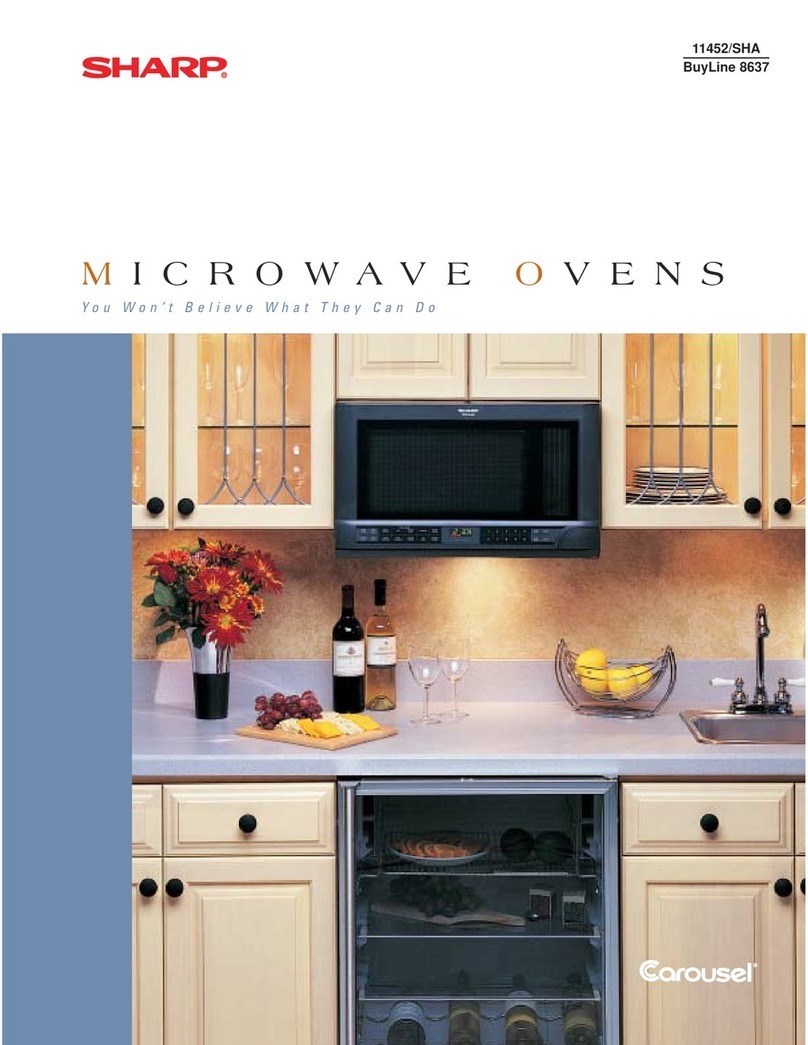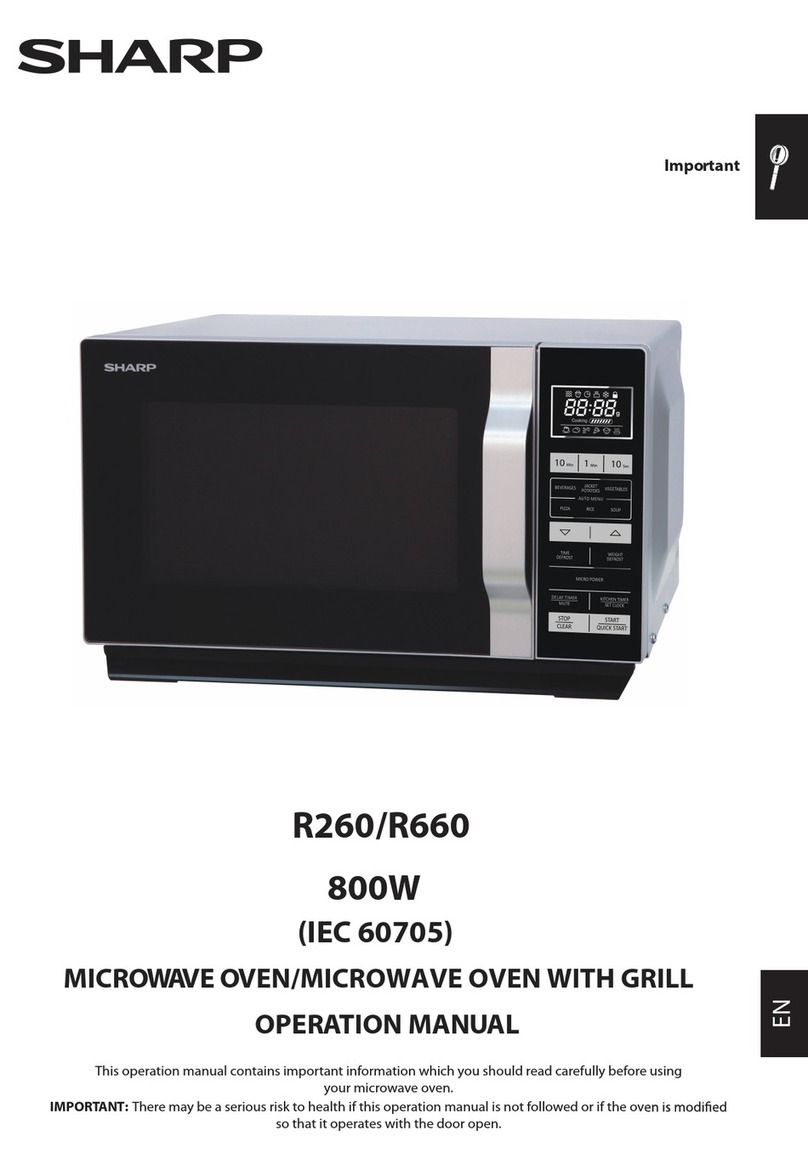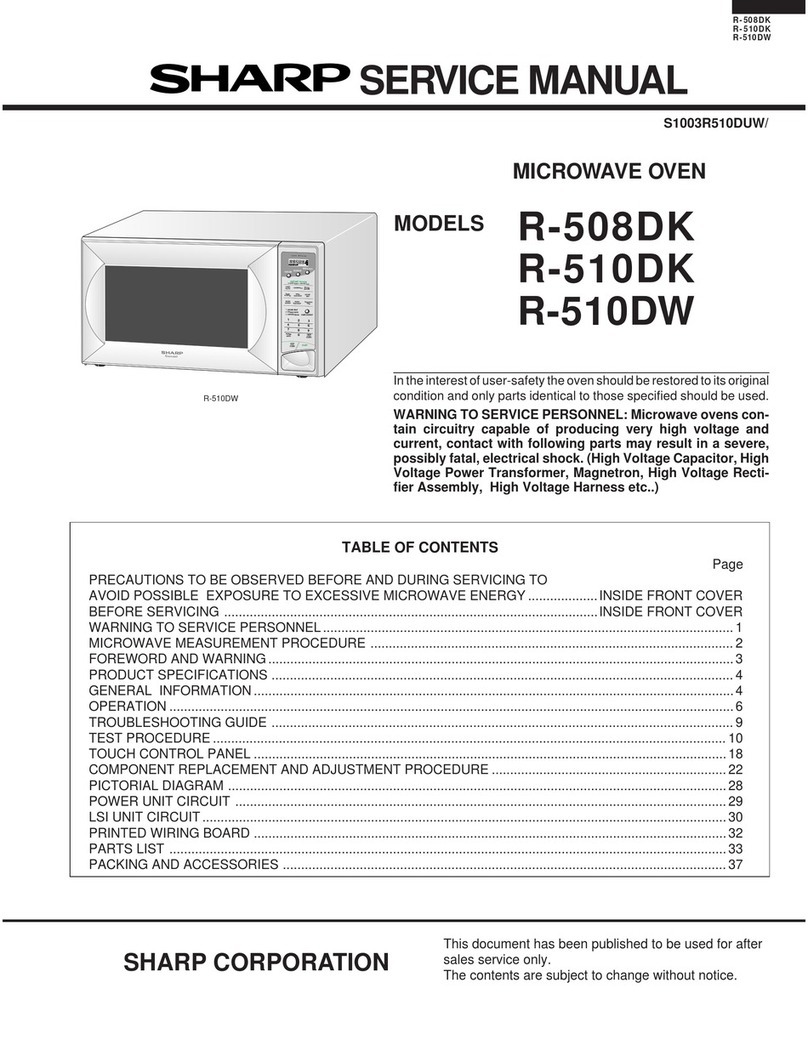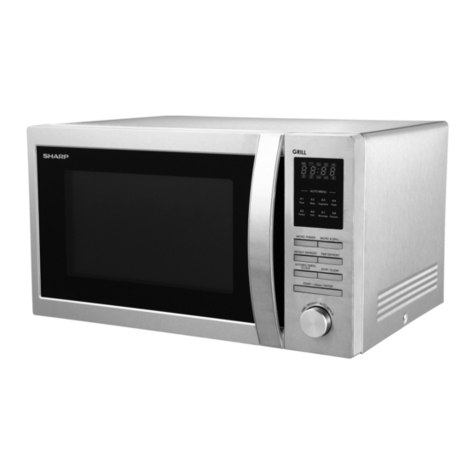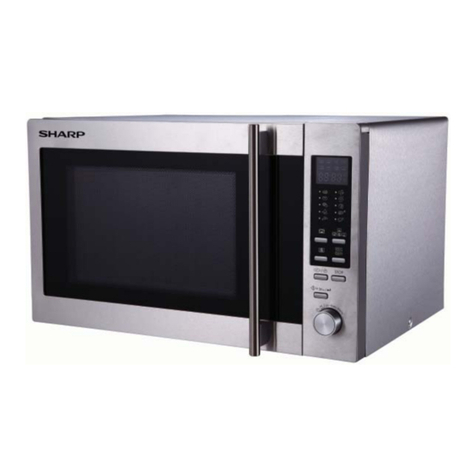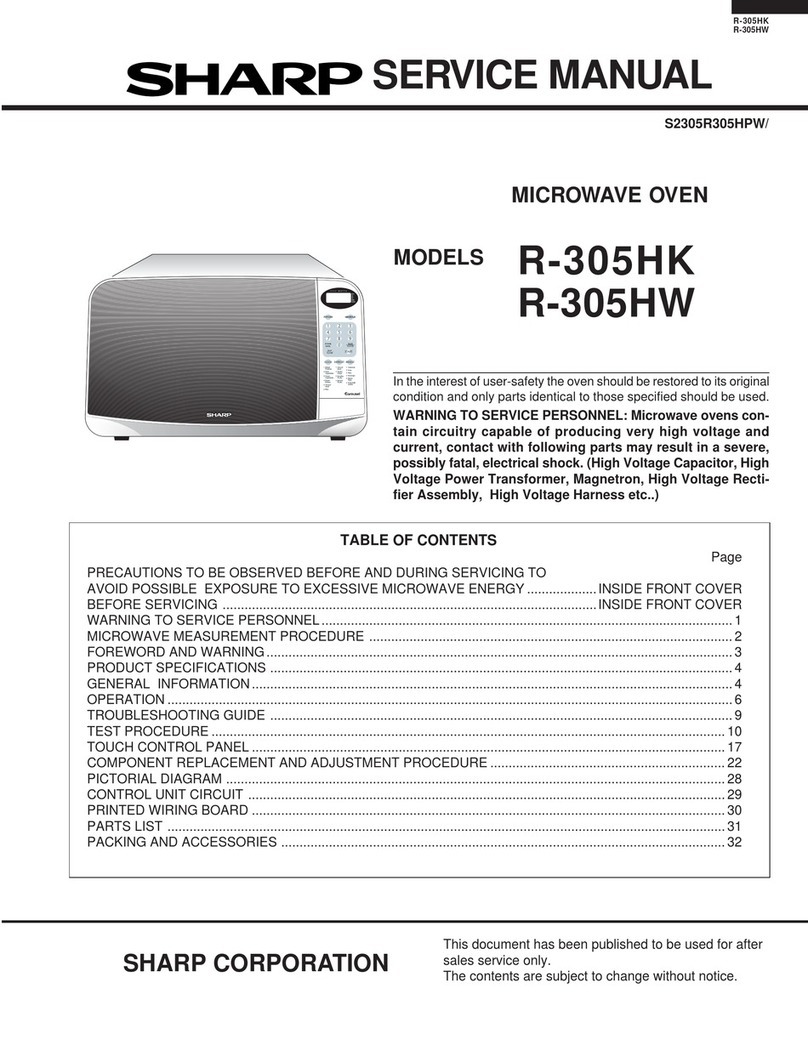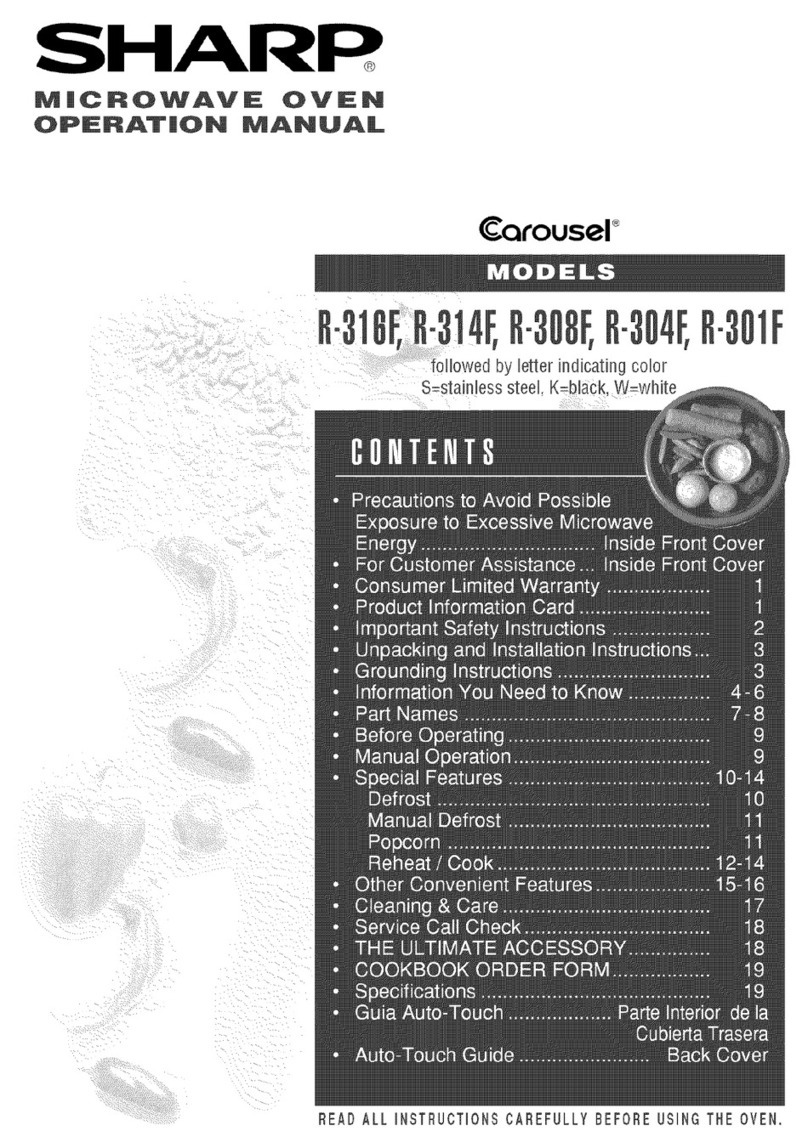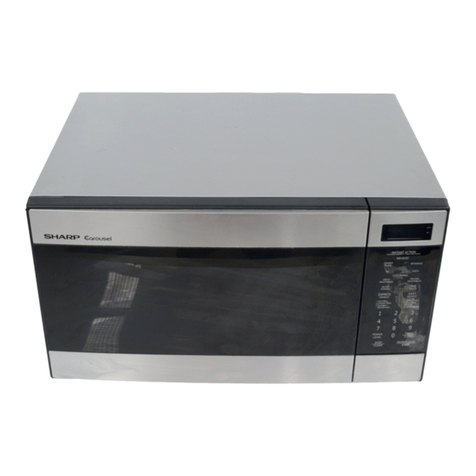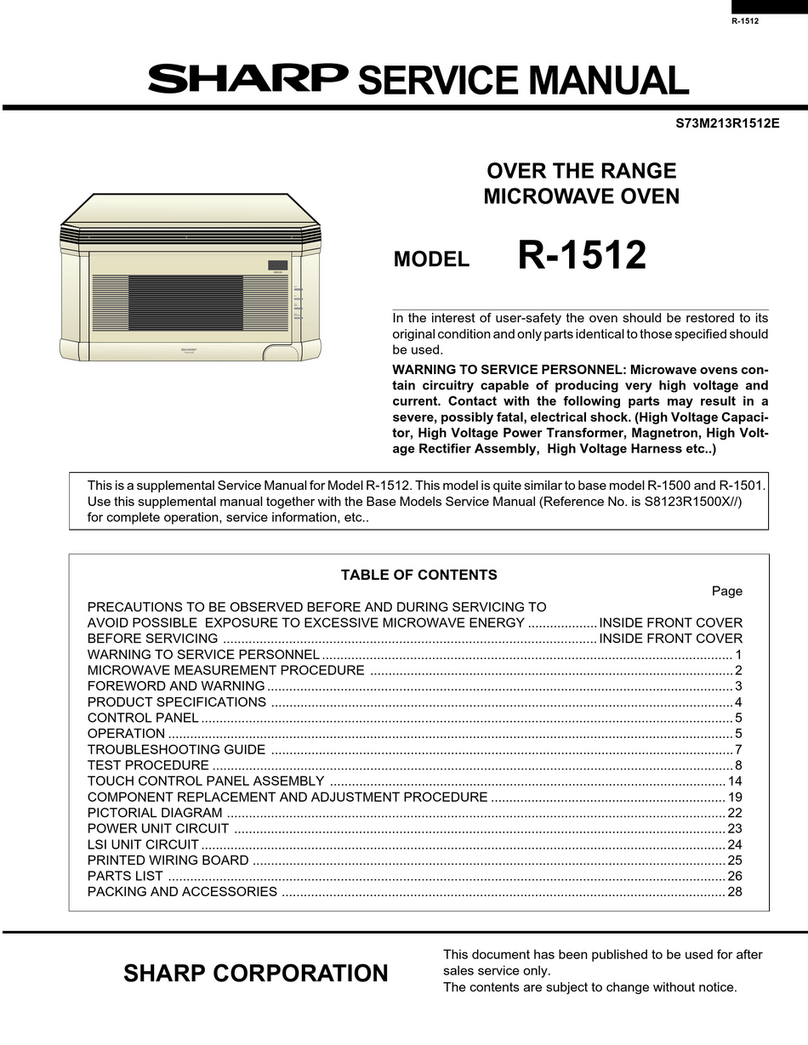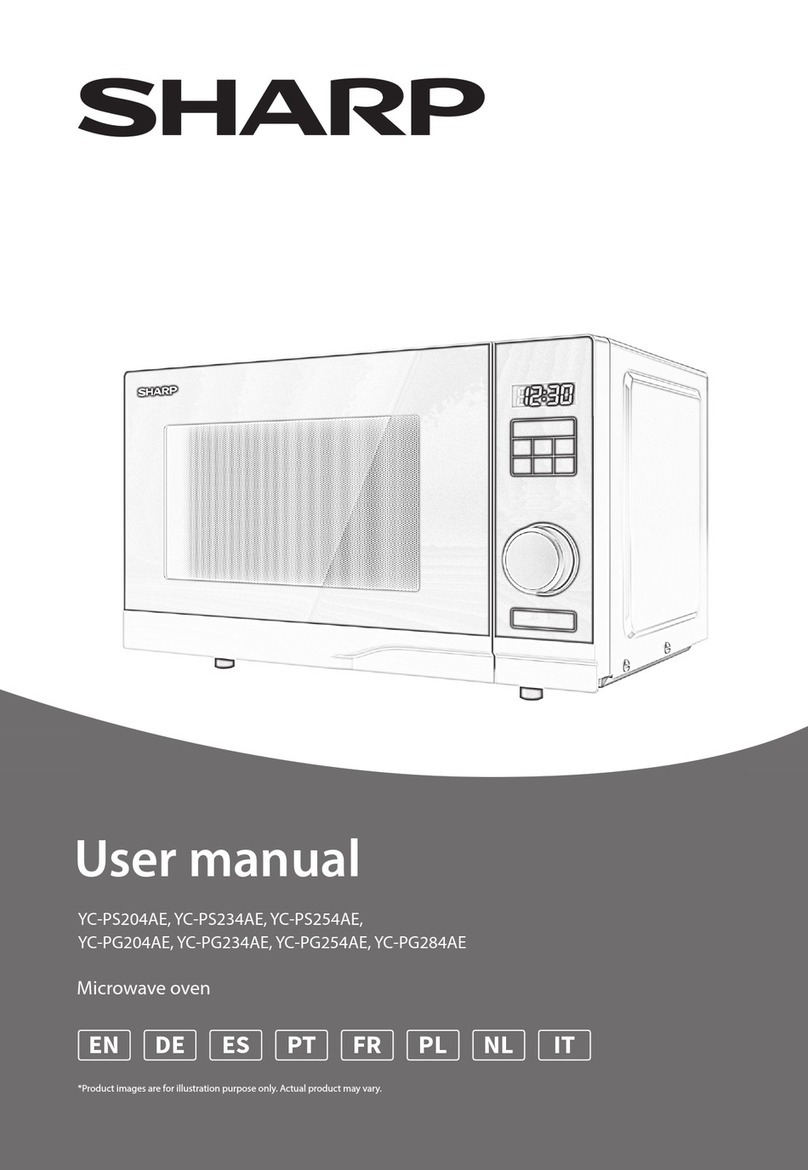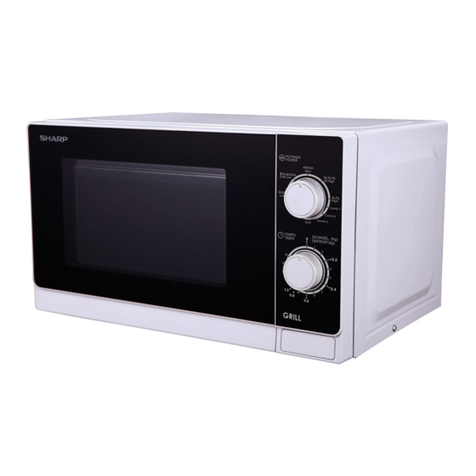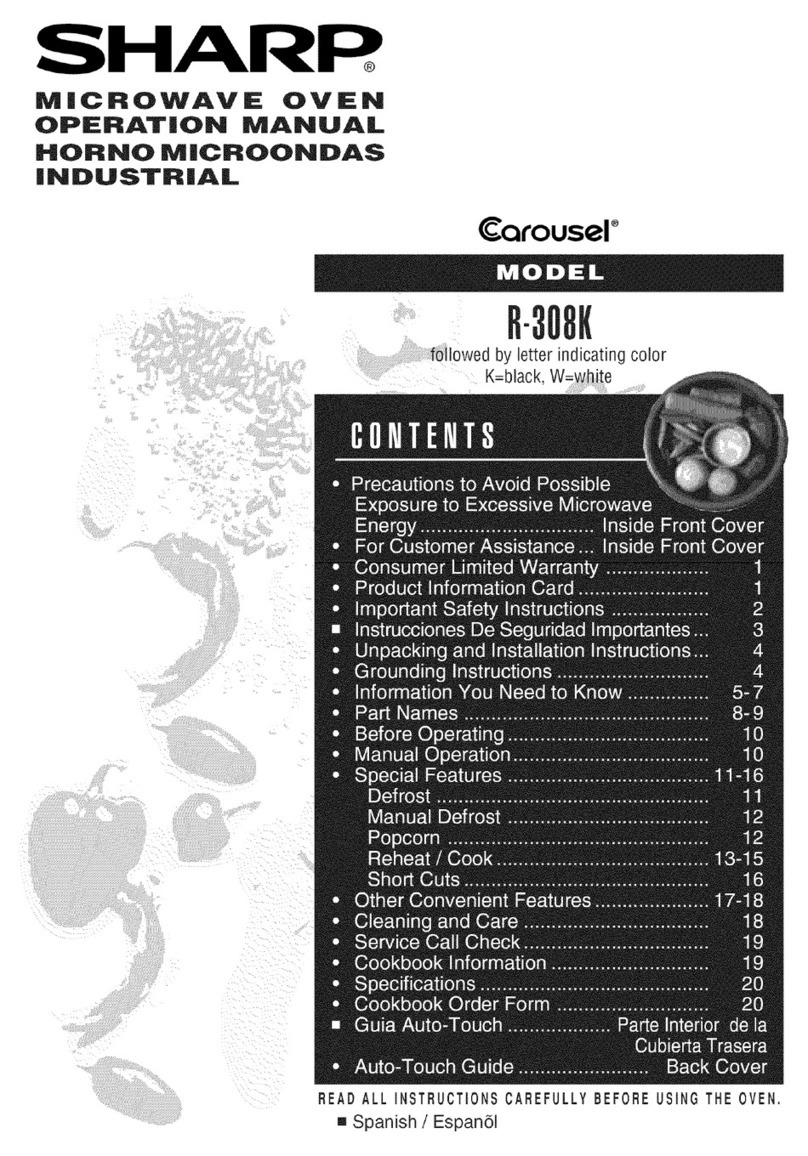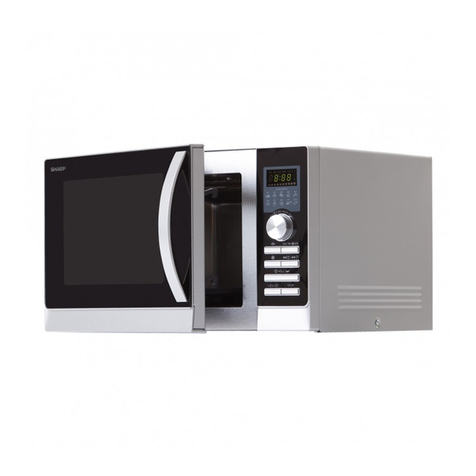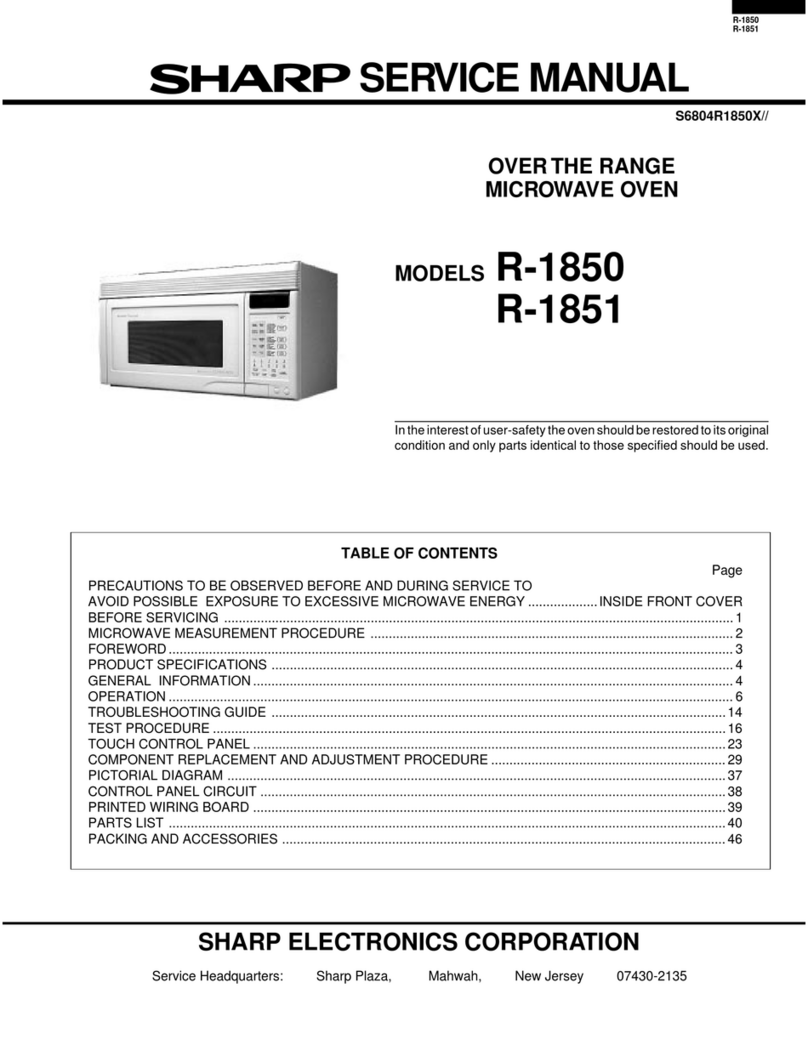R-5H53
OPERATION SEQUENCE
ription of component functions
The fo llowing is a desc
during oven operation.
OFF CONDITION
(RD7:“O:U;
Closing the oven door activates all the door interlock
switches: upper latch switch and lower latch switch.
(In this condition, the monitor switch contacts are
opened.) The stop switch is activated by the latch
head. When oven is plugged In, 240 volts A.C. IS
supplied to the control unit. But no components in ine
oven will operate. (Figure O-l on page 28)
1. The display will show flashing “88:88”,
2. To set any program or set the clock, you must touch
the STOP/CLEAR pad first.
3. The dispiay WIII clear and ” ” appears in :he d;.-;-
play and the time counts up every minute:.
NOTE:When the door is opened by pushrng the door
open button, the contacts of :he reiav RY -1 sre
closed, ther! rhe oven kmp lights.
MICROWAVE COOKING CONDlTfON
HIGH COOKING
Program desired coctk~ng trme and Variaole Cook+ng
Control by touching ?he NUMBER pads and the HiGti
pad of the Variabi e Cooking Cont:ol. When rhe STP?,T
pad is touched, the foiiowing operations occur:
1. The contacts of reiays closed and components
connected to the relays are turned on as foilovds.
(Figure O-2 on page 28’1
~__. I---
Relay cOcnt?C:ed ccmoGnet77is
__~_ .-._.- --_-- _~-- __ _________
RY-1 Oven lamp,Turncable rrotor Fan motor
RY-2 Power Transformer -______--
2. 240 volts A.C. is supplied to the primary winding
of the power transformer. The voltage is converted
to about 3.3 volts AC. output on the filament
winding and approximately 2000 volts A.C. high
voltage on the secondary winding.
3. The 3.3 volts filament winding voltage heats the
magnetron filament and the 2000 volts high voltage
is sent to the voltage-doubling circuit, where it is
doubled to a negative voltage of approximately
4000 volts D.C.
4. The 2450 MHz microwave energy produced in the
magnetron generates a wave length of 12.24 cm.
This energy is channeled through the waveguide
(transport channel) into the oven cavity, where the
food is placed to be cooked.
5. Upon completion of the cooking time, the power
transformer, oven lamp, etc. are turned off, and the
generation of microwave energy is stopped. The
oven will revert to the OFF condition.
6. When the oven door is opened during a cooking
cycle, the monitor switch. upper and lower latch
switches are activated with the followrng resuits.
The crrcuits to the turntable motor, fan motor and
high voltage components are deenergized, the oven
lamp remains on, and the digital readout displays
the time still remaining in the cook cycle when the
door was opened.
7 The monitor switch IS electrrcally monrtoring the
operation of the upper and !ower latch switches and
6 mec5ts nrcally associated with the door so that !t
jNi!i funGion tn the foilowtng sequence.
(1 ) ‘v?ihen the door is opened from a closed posi-
Thor;. the upper larch and lower latch switches
operate to open their contacts first, and then
Ihe sontacts of the monrtor swatch ciosed and
the :contacts of the stop switch open.
t21 Wheq the door IS closed from the open position,
:ne comacts oi rhe moG:iIor switch should be
craned firs: and rhe ,zontac;s of :he stop swatch
ar;> ziosec and ther tipcer !atch and lower
;atc,les are ZiGsee,
/T’
* -?cs sf 1,113ap~?r ap‘-j ;c;Q-~>~:;aTcjy
di LV 5wttch switches
;a’: wit’r: -:p,eir {be “,o~~tac:s l;i:>~e~:i i,\!ken -,he doOr -
!2
pr.C;n!AA
vyv* i”.A, Tr;e ccjcn:::zr S\$/iiCh \.A/;ii form s short c:rc;:i;
Thro!-:cjh ‘h? :‘i!$+ and ihe ‘-!pLy?r _31?c ‘cJ\n/ef ja:ch ftise
s*jk ctc:?es i:du~;f-~ :pe fus5 tfj brr~~,y
MED HIGH, MED; MED LOW (DEFROST), LOW
COOKING
When :iarrabie Cooking- Power 1sprogrammed, the 240
voits A.C. is supplied to the power transformer
rntermittent!y through the contacts of relay! RY -2)
which is operared by the control unrt within a 32 sec-
ond time base. Microwave power operation IS as fol-
iO\NS:
_.____
VARI-MODE ON TIME OFF TIME
-__.
HIGH 32 sec. 0 sec.
(100% power) -__
MED HIGH 24 sec. 8 sec.
(approx. 70% power)
MED 18 sec. 14 sec.
(approx. 50% power)
MED LOW (DEFROST) 12 sec. 20 sec.
(approx. 30% power)
LOW 6 sec. 26 sec.
(approx. 10% power)
Note: The ON/OFF time ratio does not correspond
with the percentage of microwave power, be-
cause approx. 2 seconds are needed for heating
of the magnetron filament. (RD71401 U)
3
